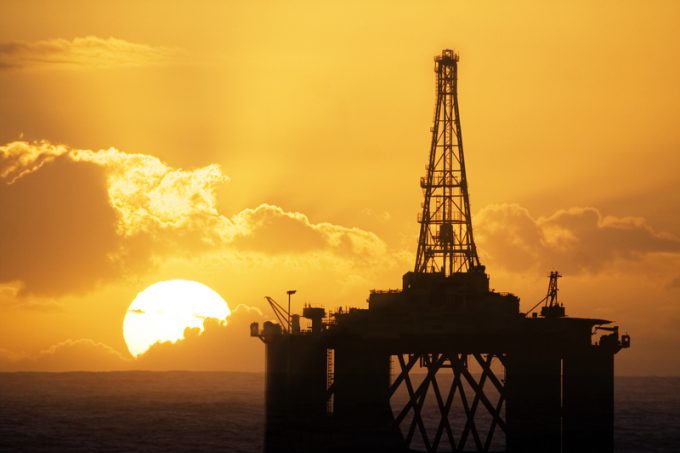Container spot rates have peaked as all major trades see prices fall
There was more evidence in this week’s container port freight markets that peak prices on ...

The debate surrounding bunker costs has a familiar ring – more than a few distressed shippers are telling me the carriers should bear the brunt of a difficult situation to which they have contributed in their quest for market share.
But are rising oil prices a sign of worse things to come for the container shipping industry? Let’s look at what lies beneath the surface of what I think was a predictable scenario for all the majors.
Oil
Of course, the future direction ...
Crew member dies as Maersk Frankfurt catches fire on maiden voyage
Maersk Frankfurt owner declares General Average, as fire-fighting continues
More danger to box ships as Houthis expand Red Sea attack arena
Bangladesh 'jam-packed' with cargo as curfew and internet restrictions continue
K+N eyes more cost-cutting after first-half profit and market share declines
'Last chance' for US importers to stock up before possible east coast port strike
New FMC regulation rules out carrier 'lame excuses' for rolling cargo
Maersk Frankfurt heads for open water as container fire subsides

Comment on this article
Gary Ferrulli
June 28, 2018 at 3:27 pmThe article on bunker surcharges and who should bear the burden —-.
The analysis is interesting but — CMA is not a publicly traded company and their
financial reports may not be the best to use to relate to the industry as a whole.
Try looking at the Alphaliner report with analysis showing that adjusted for inflation,
including fuel price fluctuation, the average rates in the industry have fallen 50% in the past 20 years. The carriers, for the most part, have themselves to blame. Their pursuit of market share and volume create the environment; the lack of capacity management, last seen in late 2009 and 2010, plus the pursuit of market share has created the environment leading to these results. The industry lost $20. Billion between 2011 and 2016 (maybe even 2017), and 2018 looks like a return to consecutive years of losses. The increases to fuel, charter rates, inland transport, all add to the results being negative. To say that the carriers must bear the burden
is proof that cargo interests want lower and lower rates forever, never mind the consequences. If there is another Hanjin, so be it. History tells us that carriers come and go – used to be 7 Japanese carriers, now ONE. 9 US Flag carriers, now none. 7 South American flagged carriers, now none. Numerous other European and Asian firms, gone. The average rate of return for the industry for several decades is 3%. Mostly their own doing, but those who complain about a fuel surcharge simply want never ending lower rates.
Ale Pasetti
June 28, 2018 at 4:43 pmThank you, GFERRULLI. Much appreciated feedback.
Let me say, I disagree with your take on CMA CGM, because the point here was to show the impact that a certain scenario could have on the carrier that has delivered the best performance in the past 12 months so. Spare a thought for all the others, public and private companies. Also, The standards of CMA’s reported numbers are also well above those all most public companies, which reinforces the view that if there’s a proxy in the industry, that must be CMA CGM, all aspects considered.
Re: “Try looking at the Alphaliner report with analysis showing that adjusted for inflation, including fuel price fluctuation, the average rates in the industry have fallen 50% in the past 20 years.”
I think we agree this confirms my take, and it is part of the problem. How do you think that the above contradicts what I said? If anything, it is a very nice add-on, but I approached this story bottom up from the P&L, rather than the other way around.
Makes sense?
Best,
AP
Jaybond
July 03, 2018 at 6:56 amMr. Pasetti, thanks for your article. I do agree that CMA is a good case in point to make. While I also agree that hapag may see worse in the years to come, the short term the UASC deal will allow it to mitigate earnings decline, while for CMa it may not be the case; so based on Hapag’s profit warning (-12-15% yoy worst case), I would argue that the decline for CMA may be worse still.
We have also not yet talked of the IMO 2020 here!
Any thoughts?
thanks
Ale Pasetti
July 03, 2018 at 7:59 amHi Jaybond,
Thanks for your comment. Very good points.
You are right, there are few adjustments that must be made for UASC with Hapag, but also consider that CMA CGM’s numbers were markedly better last year following the acquisition of NOL, and there is residual value there, IMO. In race to earnings estimates downgrades (next up is APMM), Hapag vs CMA is too close to call, I think.
Btw, do you think the two could look for some synergies as soon as next year and put more pressure on APMM?
IMO 2020? I am monitoring it closely, but it’s likely, in my view, that the 1 Jan 2020 deadline will be pushed back by a year or two. Thoughts?
Best regards,
Ale